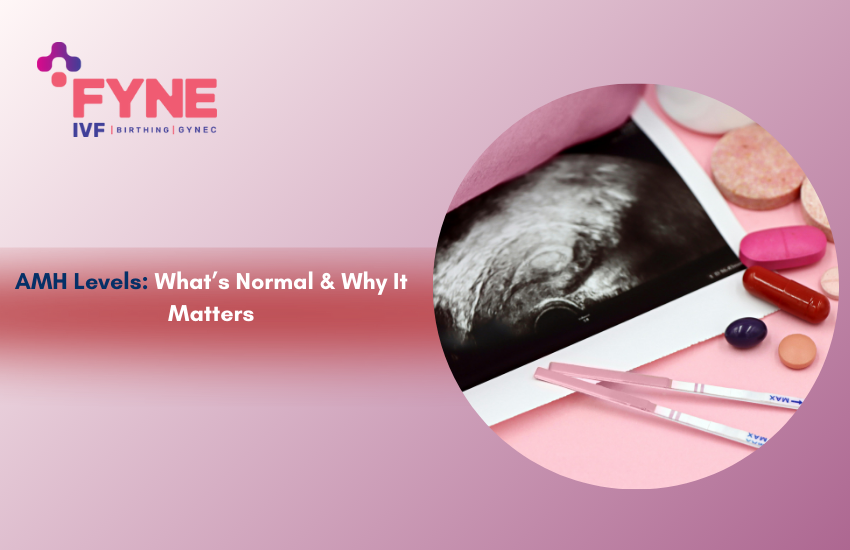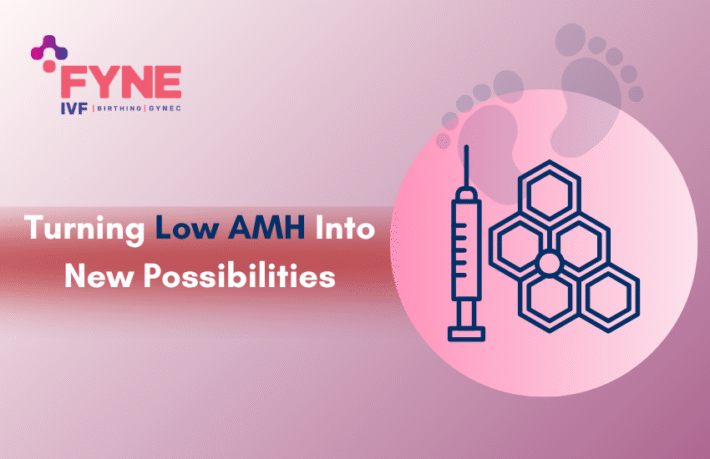Understanding Your AMH Normal Values & What They Mean for Fertility

Anti-Müllerian Hormone (AMH) is a critical marker for assessing ovarian reserve, the number of eggs remaining in the ovaries. As AMH directly correlates to fertility potential, understanding your AMH levels is essential when considering pregnancy, especially in the context of assisted reproductive technologies like IVF.
In this blog, we’ll dive into what AMH levels mean, how they vary by age, and how they impact your fertility journey. Whether you’ve heard terms like “healthy AMH levels” or “good AMH,” we’ll clarify what these numbers truly signify.
What Is AMH & Why It’s Tested
Anti-Müllerian Hormone (AMH) is a hormone produced by the follicles in the ovaries, reflecting the quantity of eggs available. It remains relatively stable across the menstrual cycle, providing an accurate estimate of ovarian reserve. The primary use of the AMH test is to evaluate ovarian reserve, guide fertility treatments like IVF, and diagnose conditions such as PCOS or low ovarian response. However, AMH does not measure egg quality, fertility, or the timing of menopause. It’s a quantitative marker of egg quantity, not quality.
AMH Normal Values & Ranges
AMH levels vary significantly between individuals and are influenced by age. Here’s a general overview of AMH levels:
- Low AMH: Less than 1.0 ng/mL (sometimes <0.4–0.5)
- Normal AMH: Approximately 1.0–4.0 ng/mL
- High AMH: Greater than 4.0 ng/mL (and especially over 5.0 or 10.0 ng/mL, often flagged for PCOS)
Age-Adjusted AMH Ranges
AMH levels naturally decline as you age. Here’s a quick reference table of age-adjusted AMH values:
| Age Group | Low (ng/mL) | Normal (ng/mL) | High (ng/mL) |
| 18-25 | <1.0 | 1.2–5.0 | >5.0 (especially >10) |
| 31-35 | <0.36 | 1.2–5.0 | >5.0 (risk of PCOS) |
Always compare AMH results with the reference range specific to the lab that conducted your test, as different labs may use slightly different thresholds.
What Different AMH Levels Imply for Fertility
- Low AMH (<1 ng/mL): Indicates a diminished ovarian reserve. While conception is still possible, it may be more difficult. IVF may require more cycles, or consider using egg donation.
- Normal AMH (1–4 ng/mL): Suggests a good ovarian reserve, and women generally respond well to ovarian stimulation during IVF. Conception chances are favourable.
- High AMH (>4 ng/mL): Associated with polycystic ovary syndrome (PCOS), where you may have a high number of eggs, but they may not always be of high quality. There’s also an increased risk of ovarian hyperstimulation syndrome (OHSS). Higher AMH doesn’t guarantee better egg quality; age and other factors remain critical.
AMH provides insight into egg quantity, not quality, and does not guarantee pregnancy or success in IVF.
Age & Other Factors Affecting AMH
AMH levels naturally peak around age 25, then gradually decline through your 30s and drop sharply after age 35, often nearing zero after menopause.
Temporary Influencers
- Hormonal Contraceptives: Birth control can suppress AMH levels, but these levels often rebound after discontinuation.
- Lifestyle Factors: Smoking and obesity can reduce ovarian reserve, while diet and exercise may improve fertility outcomes.
- Health Conditions: Conditions like PCOS lead to elevated AMH levels, whereas ovarian surgery or chemotherapy can cause a reduction in AMH.
Genetic Factors
Genetics play a role in determining how fast your ovarian reserve declines. If early menopause runs in your family, you may experience lower AMH levels earlier than the average person.
What To Do With Your AMH Result
AMH is a helpful part of the fertility puzzle, but should be interpreted alongside other factors like age, partner’s fertility, and ovarian ultrasound results.
- Low AMH: If your AMH is low, consider consulting a fertility specialist early. Explore options like egg freezing or IVF with donor eggs. A lifestyle overhaul (diet, supplements) may also help optimise fertility.
- High AMH: If your AMH is high, PCOS could be a factor. You may need to monitor and manage your PCOS, especially if you plan on undergoing IVF. Proper fertility treatment can help regulate egg production.
- Normal AMH: Even with normal AMH, it’s important to be mindful of age and fertility timing, especially if you’re over 35 or planning to delay pregnancy. Consult with a fertility specialist to ensure timely planning.
- Pro Tip: Don’t solely rely on online calculators or assumptions. Your AMH results should be discussed with a fertility expert for the best interpretation and action plan.
The Takeaways
AMH testing is an excellent tool for assessing ovarian reserve and informing fertility decisions. However, it’s just one piece of the puzzle. What constitutes “good” AMH is relative to your age and fertility goals. If your AMH levels are lower or higher than average, don’t panic. It’s essential to take proactive steps with the guidance of a fertility specialist.
If you’re considering IVF, egg freezing, or want to understand more about your fertility potential, we recommend consulting with an expert. Understanding your AMH is only the first step in a larger fertility plan. Empower yourself with knowledge, make informed decisions, and take control of your fertility journey.
Take Charge of Your Fertility with FYNE IVF
At FYNE IVF, our fertility specialists provide comprehensive support, helping you navigate your fertility journey with expert advice, tailored treatment plans, and advanced techniques. Whether you’re concerned about low or high AMH, our compassionate team is here to guide you through each step with care. Book your consultation now!


